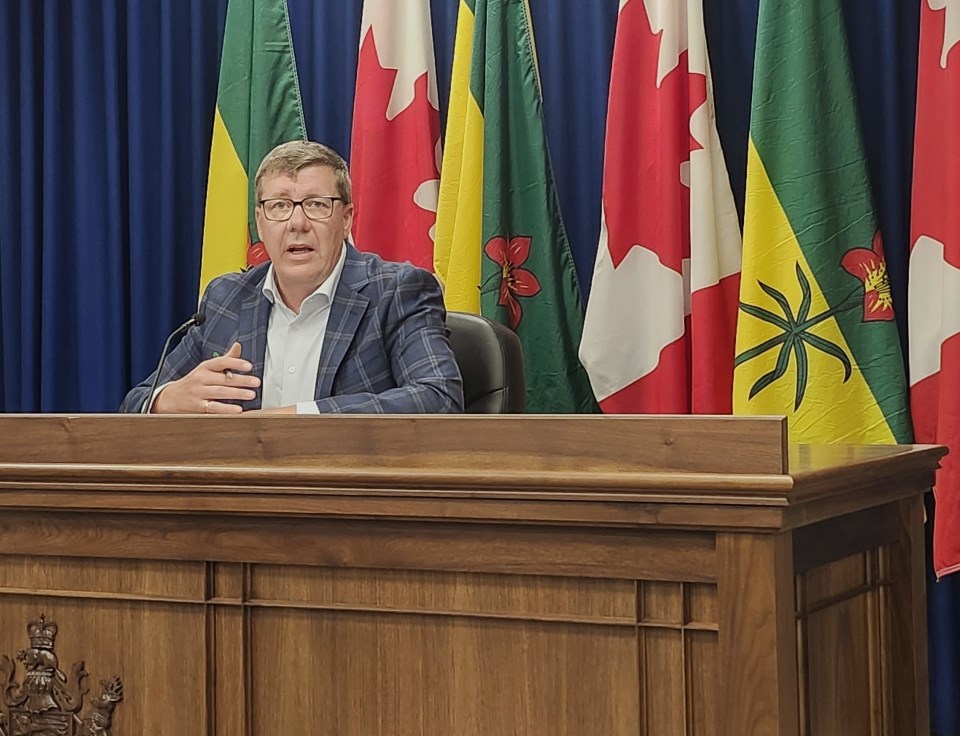SASKATOON—A stronger inter-provincial trade in Western Canada is the positive thing that Premier Scott Moe sees as the outcome of the US’s imposition of 35 per cent tariffs on Canadian goods, after the trade deadline set on Friday, Aug. 1.
Moe, last month, sent invitations to other provincial premiers to join the New West Partnership Trade Agreement, which was patterned on the Canada Free Trade Agreement. The federal government signed the CFTA with all 13 provinces and territories.
He said the NWP may not be perfect, but it aims to remove trade barriers within the country, which goes beyond establishing stronger inter-provincial trade. British Columbia, Alberta, and Saskatchewan were the first to sign, with Manitoba joining in 2017.
“It goes further in the way of trade regulation, reducing the regulatory differences that we might have, allowing people to move freely between the provinces, career professionals and otherwise,” said Moe, during a press event at the Saskatchewan Cabinet Office on Friday.
“It has lowered procurement triggers. It's a free and open procurement space, where an Alberta company can bid in Saskatchewan, or vice versa. It hasn't been without questions as we have gone through the years, but it also has a procedure for resolving disputes, unlike the CFTA.”
He added that the NWP is the strongest and most expansive agreement that Saskatchewan has today, finding some regulatory alignment and allowing more free movement of career professionals in the provinces and opening up better trade relations across the country.
Moe has also urged the federal government to continue strengthening the economies of provinces, like Saskatchewan, by adopting the “Strong Saskatchewan, Strong Canada Plan” that would benefit the entire country.
He added that approving the needed economic infrastructure projects, like pipelines and rail lines, and eliminating federal regulations that prevent economic development, like the Oil and Gas Emissions Cap and the Clean Electricity Standard, would grow inter-provincial trade.
“There is much more that Canada can do to control its economic destiny, but the federal government must remove barriers to growth to achieve this. Canadians should double down on our efforts to ensure that we are advancing and providing every opportunity for our economy to enhance the value, the jobs, the opportunity that we have as Canadians in whatever industry that might be,” said Moe.
“By advancing and accelerating the projects that are under Bill C-5, as well as doing the heavy lifting and the work in improving the regulatory environment that we have to attract investment, to expand the industries that are creating value in our communities, and ultimately to provide Saskatchewan and Canadian families a greater opportunity in the years ahead. We need to control what we can control.”
Bill C-5, or the One Canadian Economy Act, has two components: facilitating trade and labour mobility across the country by removing barriers, and amending the Criminal Code and Controlled Drugs and Substances Act.
Moe, despite the seven months of Canada-US trade tensions, said the province has experienced economic growth, job creation, and has had the lowest unemployment rate in the country. The situation in the US, however, was different, as it experienced slower job growth from May to July due to the economic uncertainty and increased costs of goods brought by Trump’s tariff policies.




